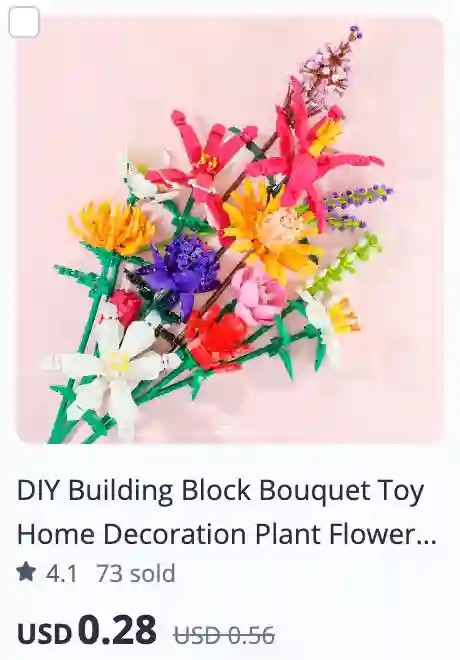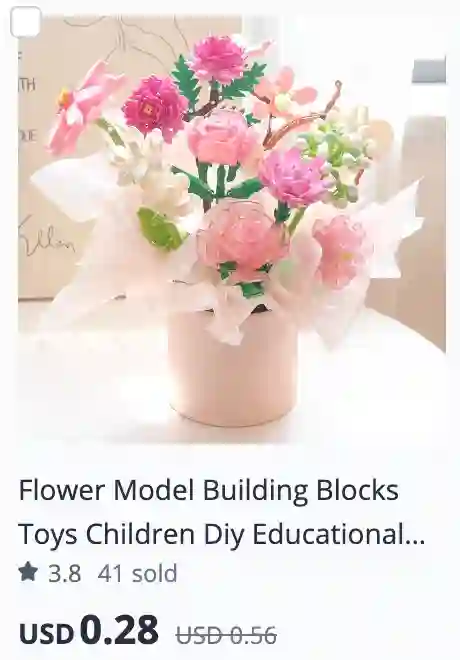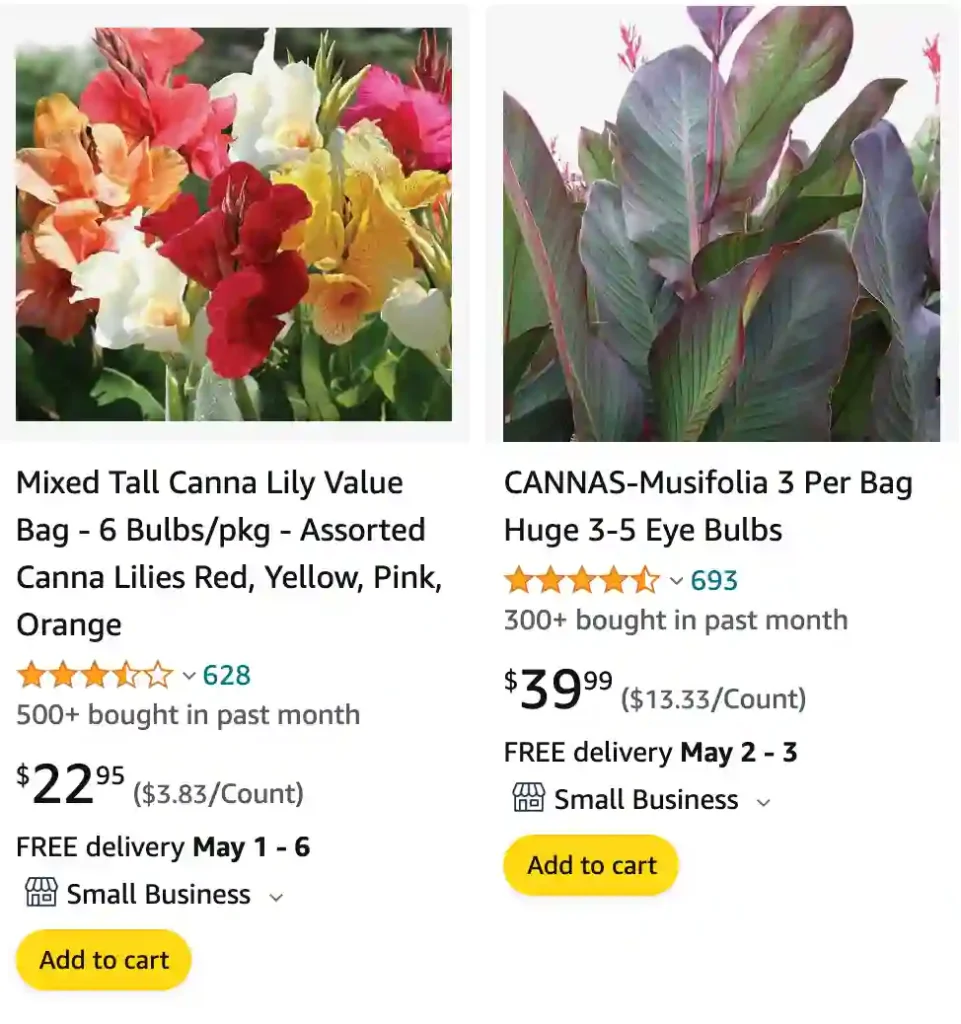





Top 100 Gift Ideas For Plant Lovers 2024
What are cannas?
Cannas are a riot of color and foliage! I saw some planted outside my local library last summer and was blown away by their giant paddle-shaped leaves and bright blooms. They remind me of something you’d see in a lush rainforest, with the way the flowers poke out from the leaves like tropical birds. The ones at the library were a cheerful mix of red, orange, and yellow – perfect for sunny summer days. I think I might try growing them in my backyard this year to add a burst of vibrant energy to the space.
How to plant cannas?
I haven’t planted cannas myself yet, but I’m determined to make it happen this year. I’ve heard they’re surprisingly easy to grow, so that’s a good motivator for me, the not-so-green thumb gardener! From what I understand, the key is giving them lots of sun and water. Apparently, they thrive in warm, moist soil. I’m going to start by hunting down some healthy-looking canna bulbs at the garden center and then find a nice sunny spot in my yard. Someone mentioned they need good drainage, so I’ll mix in some compost to loosen up the soil before planting.

When to plant cannas bulbs?
I need to remember that cannas are warmth-loving plants, so I definitely can’t rush to put them in the ground too early. I’ve been reading that it’s best to plant them outdoors after the last frost, when the soil has warmed up a bit. Since I live in a place with unpredictable spring weather, I might even wait a week or two after that just to be safe. I’m also considering starting some of the bulbs indoors in pots so I can get a head start and enjoy those bright blooms even sooner!
Are cannas perennials?
This is actually something I’ve been wondering about too! I know they look tropical, which made me assume they’re annuals and won’t survive our winters. But after a little research, I’ve learned that cannas are technically perennials in warmer climates. Here, where winter temperatures can dip, they’re usually treated as annuals. However, you can always dig up the bulbs in the fall and store them indoors over the winter to try and replant them. It sounds like a bit of extra work, but it might be a fun challenge to try and keep them going year after year.
Are cannas poisonous to dogs?
This is definitely something important to consider, especially since I have a furry friend running around. My dog has a knack for investigating pretty much any plant he comes across, and sometimes even tries to take a nibble! I’m relieved to know that cannas are considered non-toxic to dogs. It’s one less thing to worry about in the garden. Of course, I’ll still keep an eye on him to make sure he doesn’t decide to use the cannas as a chew toy!
Do cannas need full sun?
I always imagined cannas basking in all-day sunshine – those big, vibrant flowers seem to need tons of light! It seems I was right; everything I’ve read indicates they definitely thrive in full sun. Apparently, too much shade causes them to get a little leggy and produce fewer of their dazzling blooms. I plan to give my cannas the sunniest spot available, so I have the best chance of enjoying a profusion of color all summer long.
Are cannas deer resistant?
This is great news for me! My garden has become a bit of an all-you-can-eat buffet for the neighborhood deer, so I’m always searching for plants they tend to avoid. I was so happy to find out that cannas are generally considered deer resistant. It’s one more reason to add them to my yard – not only are they beautiful, but I might actually get to keep them around and enjoy them!
Can you leave cannas in pots over winter?
Since I’m hoping to make cannas a regular feature in my garden, I’ll need to figure out how to handle them when colder weather arrives. I’ve learned they don’t like frost at all, so I’ll likely wait until the first one hits and the foliage starts to die back. Then, I plan on cutting the stems down to a few inches above the ground. If I’m feeling ambitious and want to ensure these beauties come back next year, I might even dig up the bulbs and store them somewhere cool and dry for the winter.
How to cut back cannas for winter?
I want to make sure my cannas have the best chance of returning next year, so I’ll need to focus on winter care. I’ve learned that after the first frost, when the foliage starts to die back, it’s time to cut the stems down to a few inches above the ground. Since I live in a place with colder winters, the safest bet for me is to dig up the bulbs and store them someplace cool and dry. I might try storing them in a cardboard box filled with peat moss or sawdust and tucked away in the garage or basement until it’s time to plant them again in the spring.
How to deadhead cannas?
I want my cannas to keep blooming beautifully all summer long, so I’ll definitely want to get into the habit of deadheading them. From what I’ve gathered, it’s actually quite simple. When the flowers start to fade, I’ll just use a pair of sterilized garden shears to cut them off at the base of the stem. Removing those spent blooms will help encourage the plant to keep producing even more of those dazzling flowers. I’m excited to see how long I can extend the blooming season with a little extra care!
How to grow cannas from seed?
Growing cannas from seed sounds like an exciting challenge! I’ve never done it before, but I love the idea of nurturing these colorful plants from the very beginning. Apparently, the key is to give the seeds some help with germination since they have tough outer shells. I’ll probably start by soaking them in warm water overnight, and I might even try nicking the seed coats a bit to help water penetrate. Then, I’ll plant them in pots with seed-starting mix and keep them warm and moist until they sprout. I can’t wait to watch those tiny seedlings emerge and eventually develop into the lush, vibrant cannas I dream of!
Can i transplant cannas in summer?
You technically can transplant cannas in summer, but it’s not ideal. I’d definitely avoid it if possible. The summer heat and stress of transplanting can take a toll on the plant and stop it from flowering. If I absolutely had to move them in summer, I’d try to do it on a cloudy day and make sure the soil is super moist to minimize transplant shock. However, the best time to transplant cannas is when they’re dormant, which usually means late winter or early spring. They’ll be less stressed and have a much better chance of bouncing back healthy.
How to keep cannas blooming?
I want those big, showy canna blooms to brighten up my garden all summer long! From what I understand, the key to continuous flowering is deadheading. As soon as the flowers start to fade, I’ll be out there with my garden shears snipping off the old blooms. That will prevent the plant from putting energy into seed formation and encourage it to produce even more beautiful flowers. Of course, I’ll need to make sure the cannas are getting plenty of sunshine and water too – a happy and healthy plant is definitely going to bloom its best!
How to overwinter cannas?
Since I live in an area with harsh winters, my cannas won’t survive outdoors all year. I’m determined to keep them going, so I’ll need to figure out how to overwinter them. The most common method seems to involve digging up the bulbs after the first frost. I’ll trim off the withered foliage and carefully store the bulbs in a cool, dark place like my basement. Some people pack them in sawdust or peat moss to protect them from drying out. Come springtime, I’ll replant them and have another glorious season of blooms!
Are cannas poisonous to cats?
I want my garden to be a beautiful and safe place for all family members, including my curious feline friend. Luckily, I’ve found that cannas are considered non-toxic to cats. That’s definitely a relief since my cat likes to explore and sometimes even nibble on interesting leaves. Of course, I’ll still keep a watchful eye to make sure she doesn’t get too carried away – even a plant that is technically safe can probably cause an upset tummy if eaten in large quantities!
Can cannas grow in shade?
While cannas absolutely adore basking in full sunshine, I’ve learned that they can tolerate some shade. They might not bloom as enthusiastically in shadier spots, and their growth might be a bit leggier, but they’ll still survive. This is good news for me because I have a couple of areas in my yard that get a mix of sun and shade – maybe I can still try growing cannas there! I’ll keep my expectations realistic about their blooming, but it’ll still be worth it to have their bold leaves add a touch of the tropics to my garden.



